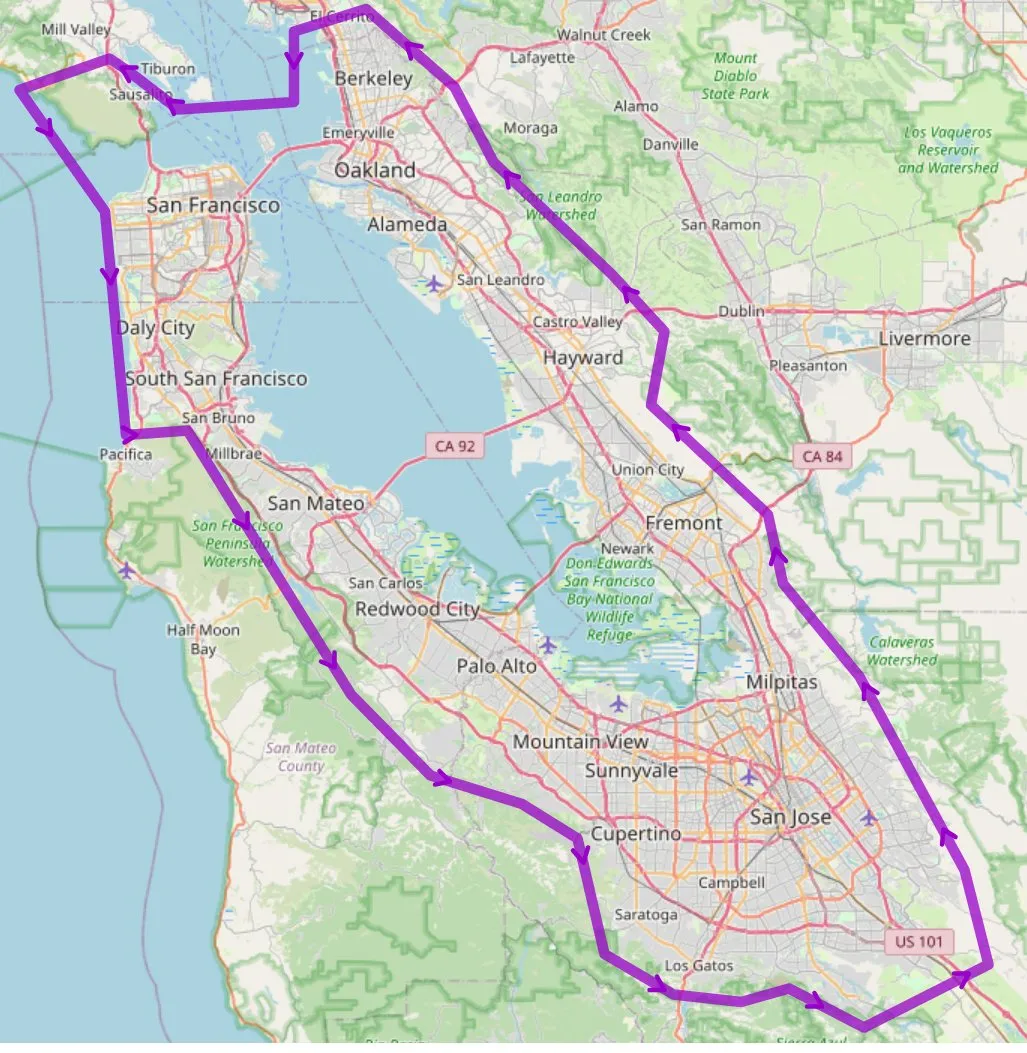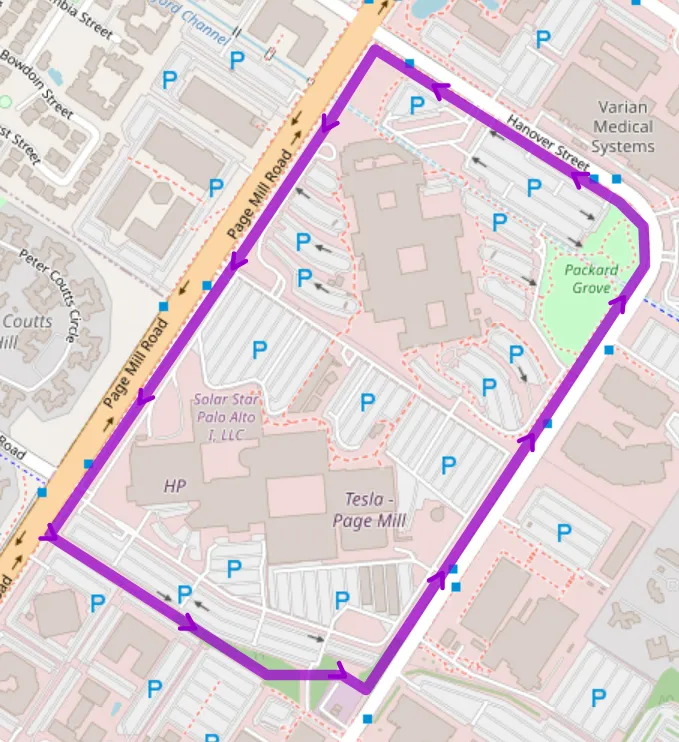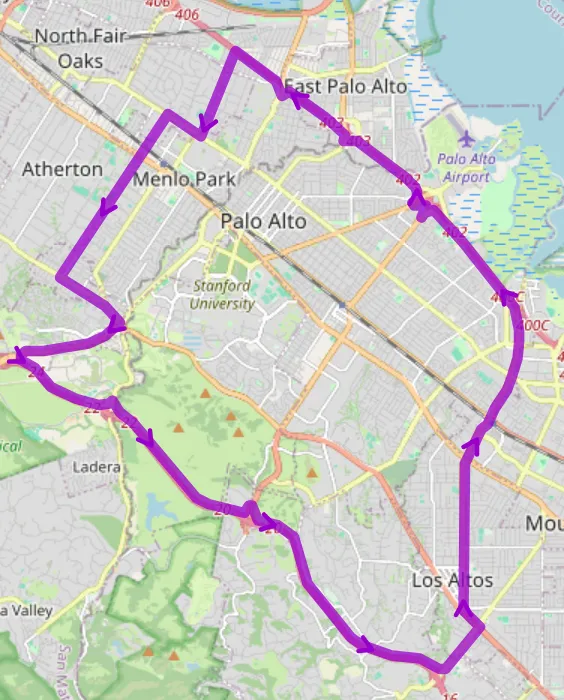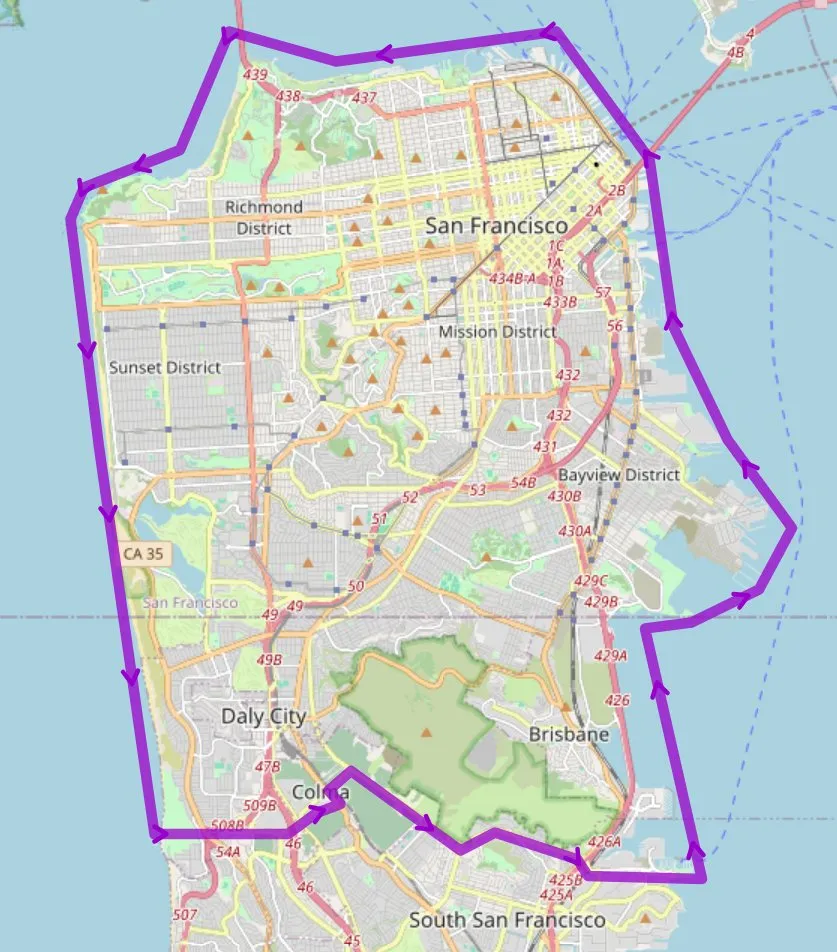Recent digging into the 2025.44 update found special regions inside Tesla’s code. One region is named “Bay Unsupervised CA DMV.” It appears to cover much of the Bay Area.

Other regions start smaller, from a single parking lot at Tesla’s Palo Alto Engineering HQ, then grow to take in more, until they include all of Palo Alto and San Francisco too. These regions are not visible to regular drivers. They hint at where Tesla may let its cars drive with nobody actively supervising.





This is the first time a Tesla code researcher (@greentheonly) has spotted such names linked to unsupervised operation in Tesla’s regular software. The move could put Tesla in direct competition with companies like Waymo, which runs robotaxis in some Bay Area spots.
How Tesla’s rollout works
Tesla seems to want to roll out FSD unsupervised, but only in chosen areas first. The company often uses geofencing for safety. It starts with tightly controlled regions, then grows the area as its confidence (and local rules) allow. This staged rollout matches what CEO Elon Musk said before, keeping things limited and safer by avoiding tricky roads and intersections until ready.
There are reports that the software includes several of these unsupervised “zones,” which could mean Tesla is preparing for wider testing in situations approved by regulators.
California’s role and Tesla’s permits
California has strict rules for testing driverless cars. The Department of Motor Vehicles (DMV) says Tesla needs a special permit to let cars operate without a safety driver. For now, Tesla does not have this kind of deployment permit for regular passengers on public roads. State regulators have warned that any unsupervised FSD launch would need to play by these rules.
Where this fits in Tesla’s plan
Tesla has talked about launching unsupervised FSD in Texas and California by the end of 2025, starting with the Model 3 and Model Y. The company already runs a robotaxi service in Austin with safety monitors on board, as a sort of test.
Recent software builds like the 2025.44 update focus on smaller improvements, not big features for the public yet. But buried code signals that Tesla’s bigger ambitions are moving forward behind closed doors.
If Tesla turns on unsupervised FSD in these new zones, it will be their most significant step towards a true robotaxi service in the Bay Area. But, it will have to prove to both regulators and the public that the technology is safe enough outside employee tests.
While other companies have focused on small areas for years, Tesla’s technology has aimed for a broader kind of self-driving. Now, the company seems to see value in being more careful by placing limits on where cars can operate alone.
Tesla’s holiday software update, due soon, will probably bring more features to regular users and could give clues about public FSD releases. For now, the largest changes happen out of sight, in code and in places only employees and a few testers get to use.
Right now, Tesla is waiting for approval to open these zones. When or if that happens, Bay Area drivers may see the first waves of unsupervised Teslas making trips on their own.
You may also like to read:
- Musk calls upcoming FSD v14.3 the “Last Piece” for self-driving »
- Musk says: “14.2 for widespread use” on new FSD release »
- Tesla pushes FSD V14.2 update to initial owners »
- Tesla FSD v14.2 adds easy speed and parking settings »




